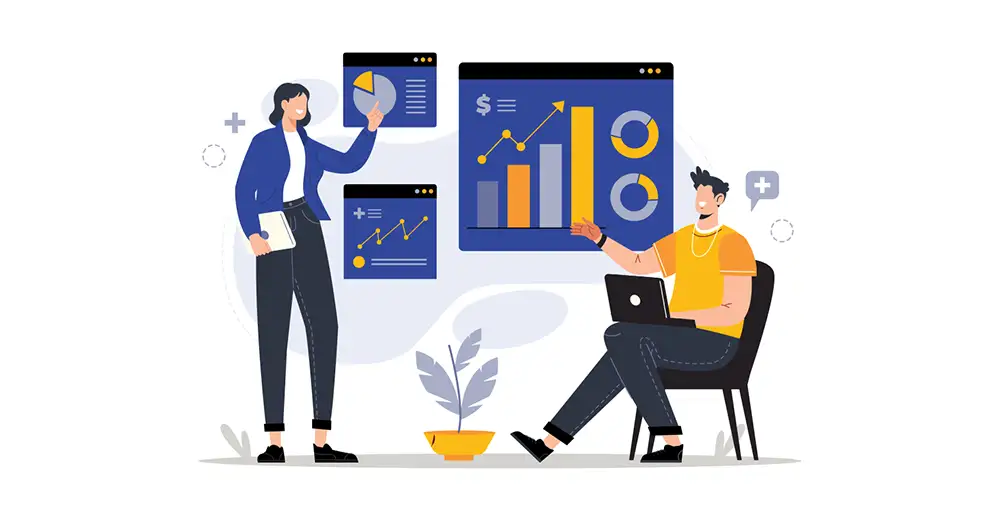 Asim Nath Dubey
Oct 15, 2025
Asim Nath Dubey
Oct 15, 2025

To become a Power BI Professional, start by learning the fundamentals of data analytics and mastering Microsoft Power BI tools. The next important step is to earn a Power BI certification and gain real-world experience through projects. This can help you develop the technical and analytical skills necessary to transform unstructured data into actionable knowledge that can benefit any business.
Today, Power BI is one of the most sought-after tools in the data-driven world. Whether you are a student, an IT professional, a business analyst, or someone preparing to change careers. Learning Power BI can lead to exciting and profitable business intelligence career opportunities.
Let's now take a closer look at how to become a Power BI professional step-by-step.
Do you want to be a part of the data-driven revolution that is taking place in every industry? Then, becoming a Power BI professional is the best choice. The following are the seven steps that provide you with the answer to the question of how to become a Power BI professional:
Build a Strong Foundation in Data and Business Intelligence
Learn Power BI Fundamentals
Master Key Power BI Professional Skills
Earn a Power BI Certification
Gain Hands-On Project Experience
Expand Your Business Intelligence Knowledge
Develop Real-World Data Storytelling and Communication Skills
Now, let’s explore each of the seven steps in detail that you can follow to become a successful Power BI professional in 2026.
Building a strong foundation in business intelligence and data analytics is key to becoming a Power BI Professional. This foundation guarantees that you can create insightful reports and interpret data accurately. Here’s how you can build solid Data and Business Intelligence skills:
Pro Tip: Strengthen your analytics foundation by exploring job roles that benefit from Excel certification. This helps you transition smoothly into Power BI.
To explore the fundamentals of Microsoft Power BI, your primary workspace is Power BI Desktop. Here you get to link data, create reports, and display insights. Your learning roadmap should include:
Real-World Example: A marketing analyst can use Power BI to visualise customer engagement metrics from Facebook Ads and Google Analytics in one dashboard, helping teams adjust campaigns in real time.
Read Also : Top Job Roles You Can Pursue After Completing A Power BI Course
To stand out in the job market, you need to learn a combination of technical and soft skills that define a Power BI professional. Essential technical and soft skills include:
|
Power BI Skills |
|
| Technical Skills |
|
| Soft Skills |
|
Pro Tip: Strengthen your analytical confidence by checking the Best Excel Courses. Excel mastery complements Power BI perfectly.
Read Also: Power BI Vs Excel: Which One Should You Learn?
A certification increases your credibility in the competitive BI market and serves as evidence of your expertise. Here’s How You Can Get Certified:
Note: Enrolling in a recognised Power BI training can help you prepare well for the Microsoft Power BI certification exam. For the most up-to-date exam information and resources, visit Microsoft's official certification page.
Practice is more important than theory if you want to become a true Power BI expert. You can better grasp how data behaves and how to transform it into meaningful insights by working on real-world projects. Here are several effective ways to gain practical, hands-on experience
A trained Power BI specialist is aware of Power BI's role within the larger business intelligence ecosystem. You need to understand how data connects across systems and supports business objectives in addition to dashboards and visuals.: To become a well-rounded BI professional, focus on these areas
Data storytelling turns information into clear narratives for decision-makers. As a Power BI professional, your success depends on technical skills and the ability to communicate insights effectively. To build this skill, you need:
After learning Power BI, earning certifications, and completing projects, it’s time to turn your hard work into a successful career. Numerous positions in different sectors are made possible by Power BI.
Exciting job titles like Power BI Developer, Data Analyst, Business Intelligence Analyst, BI Consultant, Data Visualization Specialist, Reporting Analyst, and Data Engineer (with a focus on Power BI) are available for you to investigate. Here’s how you can successfully enter the job market and start building your Power BI career:
| What to Do | How to Do It | Why It Matters |
| Create a Professional Resume | Highlight your Power BI certifications, hands-on projects, and measurable results. | Helps recruiters see your real-world impact and technical ability. |
| Build a Strong Portfolio | Showcase your dashboards on GitHub, Power BI Service, or LinkedIn. | Demonstrates your practical experience and creativity. |
| Customise Each Application | Tailor your resume and cover letter for specific job roles. | Makes your application more relevant and noticeable. |
| Network Strategically | Join BI webinars, local tech meetups, or connect with recruiters on LinkedIn. | Expands your visibility and helps you discover hidden job opportunities. |
| Prepare for Interviews | Be ready to explain your dashboards, data sources, and insights clearly. |
Shows that you understand not just the tools but also the business value.
|
| Start with Entry-Level Roles | Apply for positions like Junior BI Developer or Data Analyst Intern. | Helps you gain professional experience and grow faster. |
| Keep Learning | Continue exploring Power BI Premium, AI features, and cloud integrations. | Keeps your skills updated and makes you more valuable. |
| Plan Long-Term Growth | Set career goals to move into senior roles like BI Architect or Data Strategy Manager. | Builds a strong, future-focused career path in business intelligence. |
| Experience Level | Average Salary |
| Entry-level Power BI jobs | $55,000–$70,000 annually |
| Mid-level professionals | $80,000–$100,000 |
| Senior consultants and BI managers | $110,000–$140,000+ |
In India, the UAE, the UK and other Asian markets, Power BI professionals earn between ₹6 LPA to ₹20 LPA, depending on skills and experience. These figures show why Power BI expertise is highly sought after in industries like finance, healthcare, IT, and e-commerce.
Becoming a Power BI professional in 2026 is both realistic and rewarding. By following a clear roadmap, learning the basics, mastering Power BI tools, earning certifications, gaining hands-on experience, and staying active in the BI community, you can become a skilled and trusted analytics expert
Power BI is more than just reporting software; it’s the foundation of modern business intelligence. Begin your journey right now with organised instruction and guidance from skilled experts.
1. How long does it take to become a Power BI professional?
It depends on your background. With consistent learning, beginners can gain job-ready skills in 3–6 months.
2. Do I need programming knowledge to use Power BI?
Not necessarily. While SQL or Python helps, Power BI is user-friendly and designed for both technical and non-technical professionals.
3. Which Power BI certification is best for beginners?
The PL-300: Microsoft Power BI Data Analyst Associate certification is the most recommended starting point.
4. Are Power BI jobs in demand in 2025?
Yes, the demand for Power BI professionals is growing globally, driven by digital transformation and the need for data-driven decision-making.

Asim Nath is an Accounting and Microsoft Office trainer at Edoxi Training Institute. He has over 13 years of training experience and has successfully trained more than 3000 professionals in Accounting and Microsoft Office applications. Asim’s specialisations include Financial Accounting, Tally, Zoho and Quickbooks. His background in financial accounting adds valuable insights to business presentation training.
Asim is an expert in MS Office, including PowerPoint, Excel, and Power BI, positioning him as a well-rounded specialist in the Microsoft Suite. Asim employs a practical, business-focused teaching methodology. His one-to-one training approach ensures each student receives personalized attention. He emphasizes real-world applications, helping professionals create impactful business presentations.